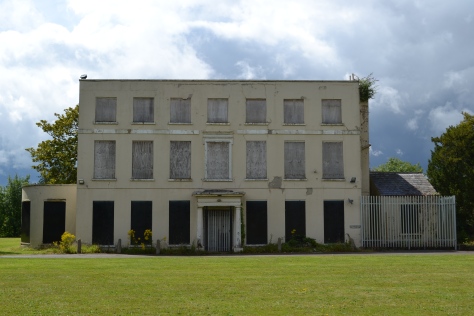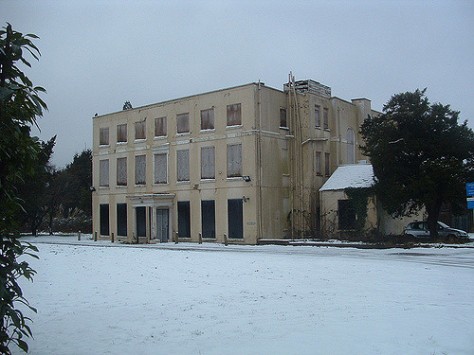A grand country house that looked after wounded Australian soldiers in the Great War. It later became a sanatorium, the foundation to one of the world’s leading hospitals.

I quote from the Yorkshire Post and Leeds Intelligencer on 23rd August 1918: ‘An agricultural correspondent tells of an extraordinary sale of farm stock today, at Harefield, Middlesex, a place so out of the way – nearly three miles from a railway station – that, till the selection of a local mansion as an Australian hospital, it was not known even to Londoners’.
These words tell us that Harefield Park, now in the London Borough of Hillingdon, was as remote as anywhere, but decades later this country house was to become world famous.
The earliest records of this historic mansion, sometime called Bellhammonds, dates to 1306. Amongst the evidence pertaining to the estate at this period, was a deed endorsed Knights Cortes, ‘whereby Prior Alexander and the Convent of Harley granted this Manor in Harefield, with all their lands in Harefield and Rykemesworth, to Richard Weltekart, of Louth, Thomas, his son, and Florence, the wife, to hold to them, and the heirs of Thomas, of the chief Lords of the fee forever, paying one hundred marks for the same’.
Harefield Place was the creation of George Cooke, the chief prothonotary of the Court of Common Pleas, the first of the Cookes who settled at Harefield, after his marriage in 1700. He created the estate after buying an ancient house called Ryes, or Rythes, and about 700 acres of land, from John Stanyan Gent, in February 1704.
Before his death in 1740, he built the present house, planted the ornamental timber, made the garden, and added about 200 more acres of land, bought at different times. Amongst his purchases was a small tenement, with stables and orchards, with three acres of land, called Bellhammonds, which he bought in 1713. He then gave that name to his own house. In ancient records, the name of Bellhammonds and Bellhackets frequently appeared as landowners in the village.
In 1750, his son, George Cooke, M.P. for Middlesex, added several farms with about 400 acres, and the mills on the River Colne, which he purchased from Sir Robert Newdigate. In 1758, he bought the Evesden Farm and fishery from William Ashby, of Breakspears. In 1824, General Sir George Cooke, his grandson, added the farm called Weybeards, or Hammonds, which he purchased from the executors of Mr R.G. Spedding, once the manager of the Copper Mills.
It was about this time that the estate came to be known as Harefield Park.
Sir George Cooke died suddenly at his chambers in the Temple in 1740, and lies buried at Hayes, where he was also Lord of the Manor. On his death, and his brother, Sir Henry, the property descended to his nephew, Mr William Frederick Vernon, who prepared a complete history of Harefield for private circulation.
The park was well timbered, and commanded extensive views of the Colne Valley. Prominent in the grounds was a fine grove of ilex of considerable size. Close to the house and south of the terrace was a large statue in white marble of Sir George Cooke, the founder of the estate, long thought to be the work of John Michael Rysbrack, but later attributed to Sir Henry Cheere, 1st Baronet, a renowned sculptor and monumental mason.
A full-length picture of George Cooke, painted by John Vanderbank in 1726, hung in the billiard room of the mansion, and many other valuable pictures were left behind by the Cooke family.
At the start of the 20th century, Harefield Park was in the possession of Mr Charles Billyard Leake, who owned extensive sheep farms in Australia. Shortly after the outbreak of the First World War, he offered his house and estate to the Australian Government as a convalescent hospital for the overseas forces. From 1915, the house became the No.1 Australian Auxiliary Hospital, the grounds around the mansion arranged with many huts, in all accommodating about two thousand men. During the occupation, it was visited by King George V, Queen Mary, the Duke of Connaught, and Mr Billy Hughes, the Prime Minister of Australia.


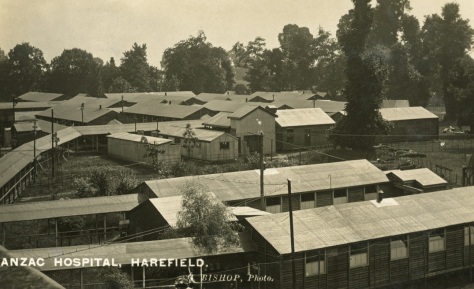
In 1919, Middlesex County Council bought Harefield Park to provide additional sanatorium accommodation for the Middlesex County Hospital for the use of tuberculosis patients, with the Government contributing £38,400 towards the cost.
What a difference one hundred years makes!


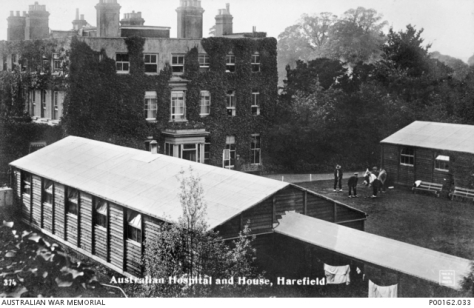
After becoming part of the NHS in 1948, Harefield first became a general hospital and then a specialist heart and lung centre. Ground-breaking work, led by Professor Sir Magdi Yacoub in the latter part of the 20th century, included the first successful heart transplant in 1980 followed by the world’s first combined heart and lung transplant in 1983. This led to Harefield Hospital having the largest transplant programme of its kind anywhere in the world.
In 1998, Harefield Hospital merged with Royal Brompton Hospital, Chelsea, to become Royal Brompton & Harefield NHS Trust before achieving Foundation Trust status in 2009. The organisation is now referred to as Royal Brompton & Harefield NHS Foundation Trust.
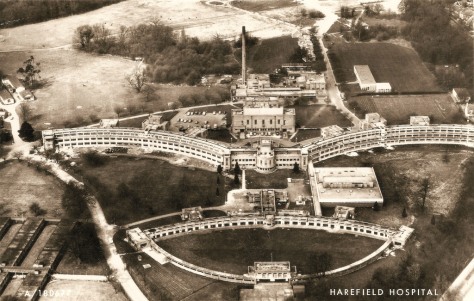
Grade II* listed Harefield Park mansion provided many years of service, but soon became lost on a rapidly expanding site. It was last used as accommodation for Harefield Hospital’s medical staff and is still standing, although it has become a long-serving entry on Historic England’s ‘Buildings at Risk’ register. According to the list, the house is vacant and in very poor condition, the building is propped-up and a temporary roof is in place.
